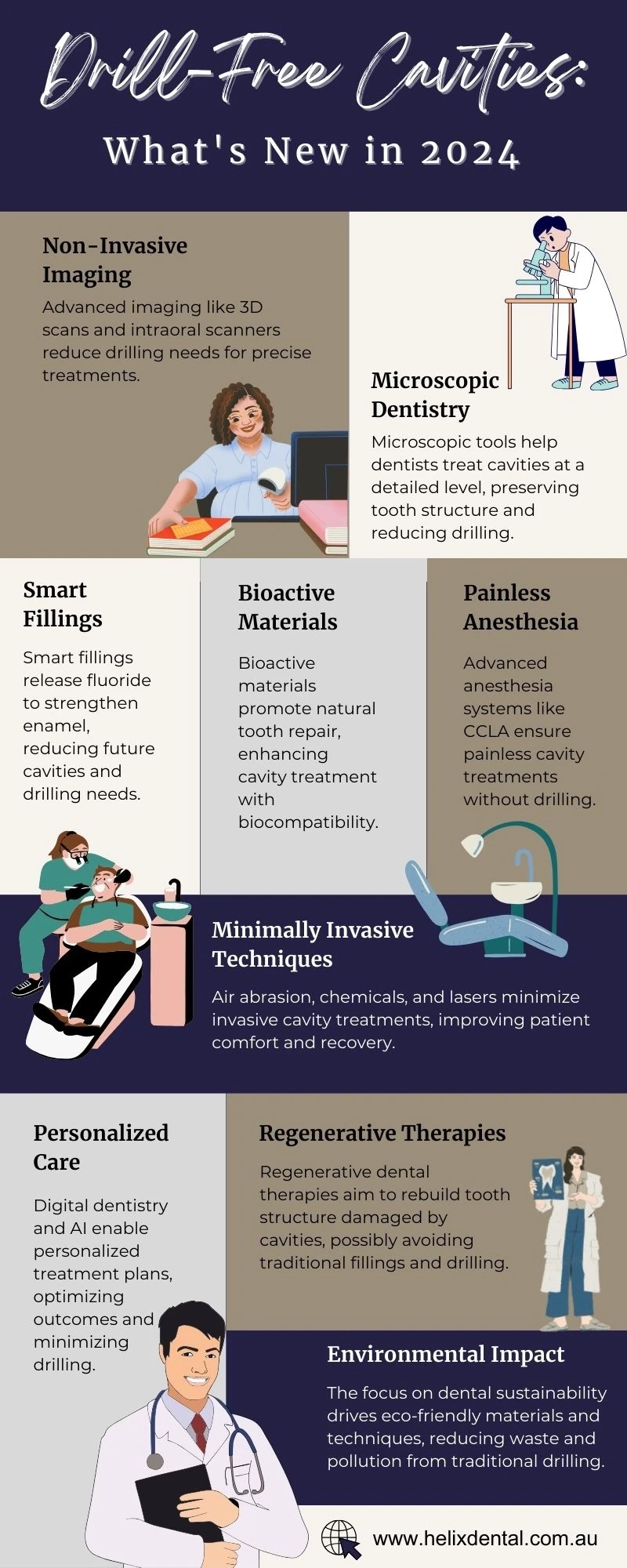The dental community is faced with a critical question as technology continues to advance quickly in all fields, including dentistry: Will drill-free cavity treatments be possible by 2024 or later? Conventional techniques frequently entail drilling, which many patients find uncomfortable and unsettling. However, there is now optimism about the viability of cavity treatments without drilling because of new developments in dental technology and creative treatment methods. This blog explores the most recent developments, innovative methods, and possible discoveries that could lead to a future in cavity treatment without the need for drills, providing Australian patients with a more comfortable and minimally intrusive dental experience.
Examining Innovations in Drill-Free Cavity Treatment
Laser Technology:In drill-free cavity treatments, laser technology has shown great promise. Instead of using conventional drilling, dentists can precisely target and remove decaying tissue using lasers. This method retains more good tooth structure while also lessening discomfort during the treatment.
Nanostructured Materials:Cavity treatment has been transformed by the development of nanostructured materials. These substances encourage the remineralization and restoration of teeth, providing a safe, natural substitute for amalgam fillings. They help avoid cavities in the future by fortifying enamel, which lowers the need for drilling operations.
Smart Fillings:Materials for smart fillings that have the ability to gradually release remineralizing agents or fluoride have also become popular. In the long run, these fillings may lessen the need for invasive drilling because they actively strengthen enamel and improve oral health.
Non-Invasive Imaging:By providing detailed views of cavities, advanced imaging technology such as intraoral cameras and 3D scans allow dentists to precisely plan and carry out drill-free treatments. This reduces needless drilling while improving treatment accuracy.
Patient-Centered Approach:The move towards cavity treatments without the use of a drill is consistent with a larger dental trend towards patient-centered care. Dental professionals may improve patient satisfaction and the entire dental experience by providing more comfortable and minimally intrusive treatment alternatives.
To conclude, the potential for drill-free cavity treatment in 2024 signals an exciting advancement in dental care, promising patients a smoother and less invasive experience. Ongoing research and technological advancements suggest a possible reduction or elimination of drilling in cavity treatments. With sophisticated imaging techniques and innovative materials emerging, dentistry is moving towards prioritizing patient comfort and optimizing treatment outcomes.
Based on my personal experiences, I have found Helix Dental to offer valuable solutions for dental issues. Should you have any concerns regarding dental problems, Helix Dental could serve as a useful reference point. However, it's crucial to consult with your dental care provider and select a practice that aligns with your specific needs and preferences. Remember, regular dental check-ups and preventive care are essential for maintaining excellent oral health.
Looking forward, as drill-free cavity treatments continue to evolve alongside patient-centered care, we can anticipate a future where dental procedures are not only effective but also more comfortable and less intrusive for patients across Australia and beyond.


